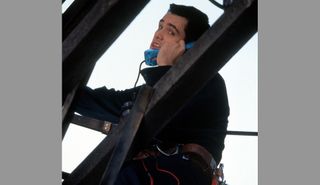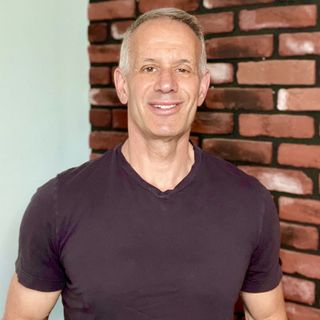
It seems we were onto something when we named our newest report FASTs Are the New Cable. All sorts of people, in the media and on Wall Street, are noticing just how much the entire streaming ecosystem is starting to look like cable TV again — not just the FASTs.

While there seems to be much hand-wringing about how this could happen, there’s a relatively simple explanation: people actually liked old-school cable TV and the options it provided.
What they didn’t like was the way cable companies treated them, the horrific customer service, the confusing bundles and packages, the sadistic interfaces, the ever-rising prices.
But the actual service itself, at least in its ideal form, was quite popular.
It gave you a package of hundreds of different channels, the ability to spend hours flipping through them, a high-capacity DVR and a wide range of VOD offerings.
So what’s not to like?
Plenty, it seems.
NEXT TV NEWSLETTER
The smarter way to stay on top of the streaming and OTT industry. Sign up below.
Cable’s Undoing Was Largely Its Own Fault
Because they were largely monopolies and because there was a sense that cable TV was a necessity, on the order of electricity or water, many (most?) cable companies fell into the habit of treating their customers like offal.
As in, it wasn’t all that long ago that #ComcastSucks was a popular social media meme and articles like this, about cable company employees all but abusing consumers-who-also-happened-to-be-well-known-journalists, were not uncommon.
Bad behavior aside, there were numerous less subjective features about cable that turned off consumers.
First and foremost was the complete lack of transparency about the terms of the contract, which frequently locked viewers in for two years and foisted both a landline and a broadband connection on them.
It was never clear when and how you could change your service, cancel it, or even upgrade it. Attempts to get a straight answer on that often constituted an exercise in futility involving hours on a phone chain and/or on hold.
Then there were the bills themselves, which always seemed to go up. Cable companies were pros at the low-priced come-on that quickly blossomed into a high-priced monthly bill.
And let’s not forget the interfaces, which felt like they had been designed by the Stasi as a means of torturing dissidents. I remember once accidentally clicking Episode 7 of a show on the Verizon Fios TV on-demand library and the TVOS taking me over 30 clicks (not a typo) to return to the menu where I could then choose episode six.
In addition to the many ways cable companies treated customers like adversaries, there was the issue of the technology itself — outdated set-top boxes that were confusing at best, fragile at worst and where the technicians who installed them became a late-night punchline (and a Jim Carrey movie) for their lack of reliability.
So there was all that too.
And still, in the not-too-distant past, around 90% of U.S. households had a cable subscription. (Can I note how liberating it is to not refer to it as “pay TV” a term no one in the real world actually uses.)
There are multiple reasons for that.
First and foremost is choice.
Bruce Springsteen might have kvetched about having “57 channels and nothing on” but when most cable offerings had well over 500 offerings — plus a sizable on-demand library — there was pretty much always something on.
Then there was the ease of it.
You didn’t have to think. You just turned on the TV and a show appeared. If you didn’t like it or if a commercial showed up, you could just click to the next channel or, if you were very sophisticated, you could punch in the three-digit code that would take you to your favorite channel. (At one point I knew the code for ESPN HD on several different cable systems.)
And, most important of all, you had a single interface, awful though it may have been, that laid out all of the shows that you could watch.
Finally, there was the one bill thing.
While the bill may have been way too high and while a landline may have been the last thing you wanted, it was, in retrospect, easy to have everything in one place.
Fast-forward and as cord-cutting picked up, most of the cable companies took significant strides to mend their evil ways. Customer service became a priority. Set-top boxes were replaced by streaming devices or apps. Interfaces were modernized. And those completely opaque two-year contracts? Still here.
What the Great Rebundling is doing is taking the things people liked about cable — the choice, the single bill, the top-level overview of “what’s on TV tonight” — and combining them with transparency, the ability to choose a month-to-month plan for certain services and giving it to them in a far more user-friendly package along with a much more user-friendly interface.
Not to mention a much lower price. (The “F” in FAST stands for “free” after all.)
Linear Channels Make a Comeback
The return of linear channels on both FASTs and SVOD is very much a part of the Great Rebundling. People don’t like having to make a decision every time they turn on the TV.
To understand the “why” look no further than Spotify.
Sometimes people want to listen to a specific song or artist.
Mostly, though, they just want music on as background and don’t want to have to pick a new song every time. Hence the popularity of Spotify’s playlists.
TV is no different.
So why now?
Back when there were just three big streaming services (Netflix, Hulu and Amazon Prime Video) it was easy enough to manage them along with a cable subscription, especially since most consumers don’t seem to view Amazon as a video service they are paying for, but rather an additional perk of a free two-day delivery service.
But now that we're up to eight mega-SVOD services, people are feeling overwhelmed. They don’t like having to go to Google to figure out which service that new Kaley Cuoco show about the flight attendant is on. Or remembering which six months free offer is about to expire. Or feeling compelled to only watch original series every time they turn on the TV.
Hence the desire for simplicity, for a return to something that looks and feels a lot like the old cable TV system, only without all the bad parts.
What To Look For
While those of us who grew up with cable TV are no doubt nostalgic for it, the key trend to look out for is how all those zoomers and younger millennials feel about the Great Rebundling. Are they going to gravitate towards the new bundles and linear channels? Or are they just as content to do everything a la carte and not get tied down into year-long contracts?
We will know soon enough, but I suspect that simplicity will win out. ■
Alan Wolk is the co-founder and lead analyst for media consultancy TV[R]EV

